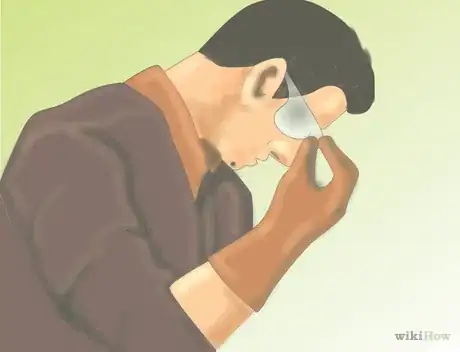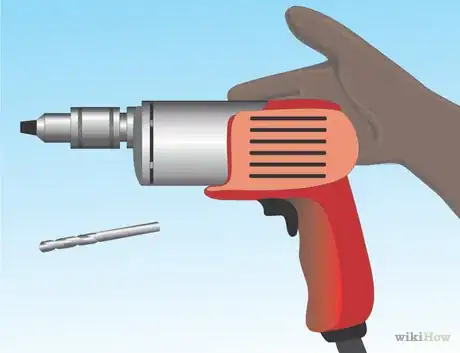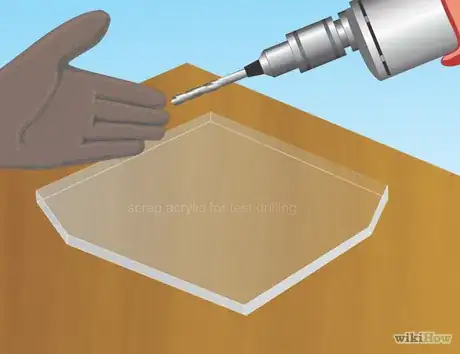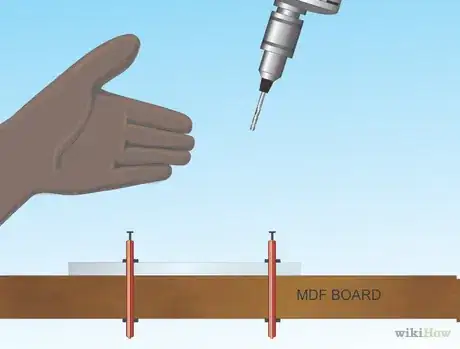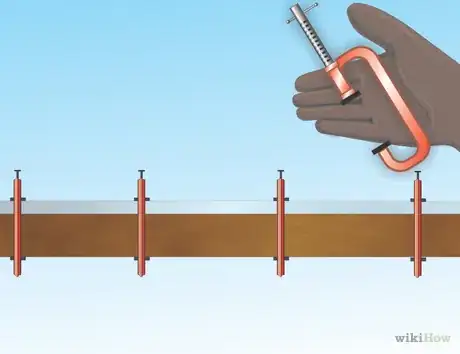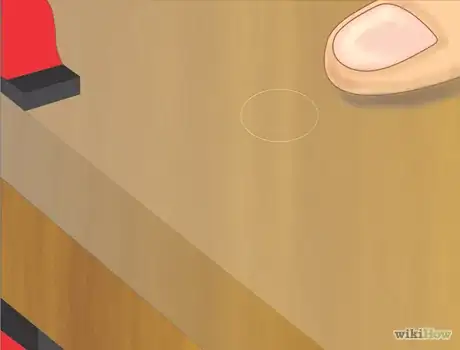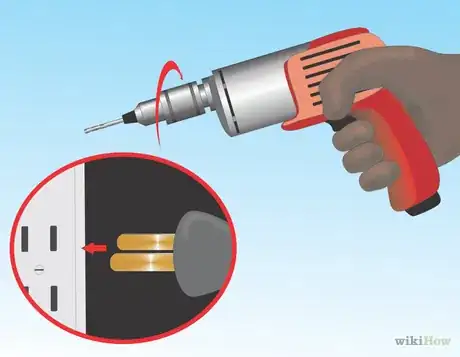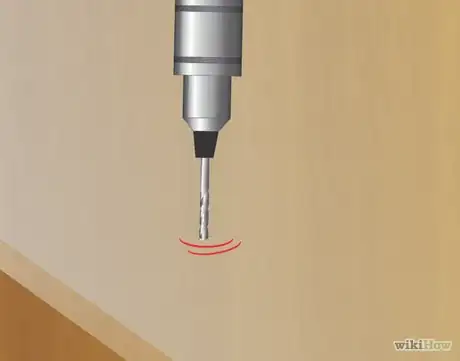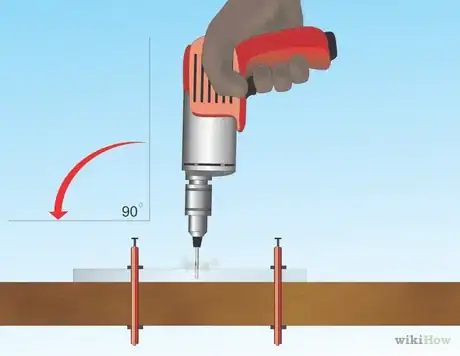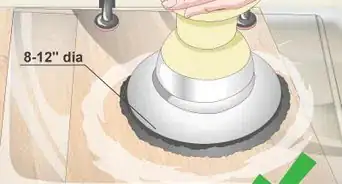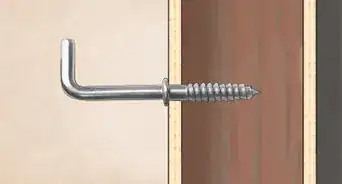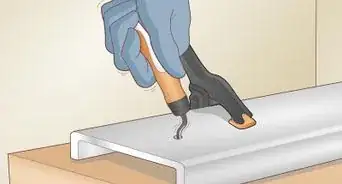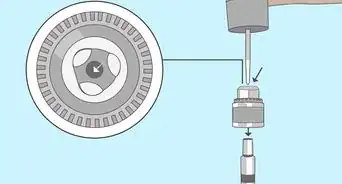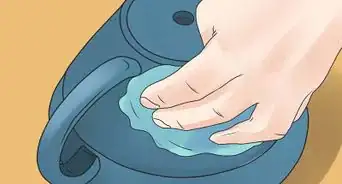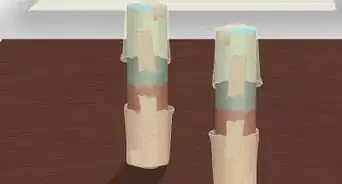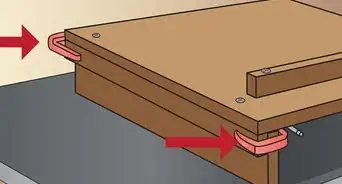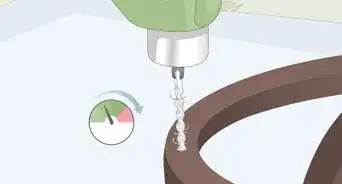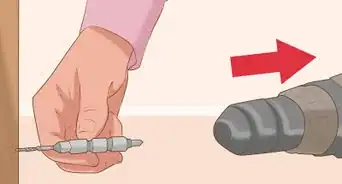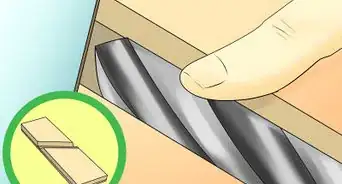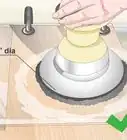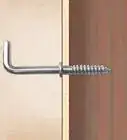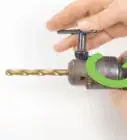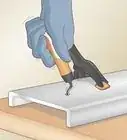wikiHow is a “wiki,” similar to Wikipedia, which means that many of our articles are co-written by multiple authors. To create this article, 9 people, some anonymous, worked to edit and improve it over time.
wikiHow marks an article as reader-approved once it receives enough positive feedback. This article received 11 testimonials and 93% of readers who voted found it helpful, earning it our reader-approved status.
This article has been viewed 294,817 times.
Learn more...
Plexiglass, sometimes called transparent thermoplastic, acrylic, Lucite and Perspex is a polymer that is often used as an alternative to glass. Valued for being shatter-resistant, plexiglass is used on construction projects that require durable, light plastic. Unfortunately, it can be brittle under certain force and scratch easily, so it must be handled with care while you are working with it. There are a number of plexiglass-safe tools and techniques that can be used to avoid cracking or melting the material. This article will tell you how to drill plexiglass.
Steps
-
1Wear safety goggles. Acrylic chips can easily fly off during drilling and be a health hazard.[1]
-
2Buy a plexiglass drill or plexiglass drill bits that can be used with a regular drill. These bits have a different geometric structure that is designed to puncture acrylic more easily and they are less likely to melt plexiglass. They are available in hardware stores and online.[2]
- You can also use a drill press working at about 500 to 1000 RPM. Acrylic drill bits are available for drill presses.
Advertisement -
3Practice with smaller pieces of scrap acrylic before attempting to drill into a large sheet.[3]
-
4Place your plexiglass sheet on top of a piece of scrap plexiglass, (one that is already ruined), or a piece of Medium Density Fiberboard (MDF.) This will make it less likely that you will chip the back of the board or scratch it when the drill bit goes through.[4]
-
5Clamp both sheets to a secure surface. Use as many clamps as is necessary to secure the sheet. For larger sheets you will need more clamps.[5]
-
6Make sure that the hole you will cut is not near the edge of the plexiglass piece. Acrylic is known for chipping near the edge when it is punctured.[6]
-
7Plug in your drill or place a charged battery inside it. Turn the drill on.
-
8Start to drill slowly into the sheet of plexiglass. You do not need to center punch acrylic like you do with metal.[7]
-
9Keep a steady, slow pace. Aim for a feed rate of about 3.5 inches (89mm) per minute. Acrylic drill bits will produce plastic shavings. Once they start to surround the drill bit, you can stop and remove them to get a better view of what you are doing.[8]
-
10If your sheet is thick, do peck drilling, going a little at the time so that you can remove the shavings from your hole and allow the drill time to cool. This will also help to prevent melting.
Community Q&A
-
QuestionIs there a special bit needed to drill plexiglass?
 Community AnswerThere are special drill bits. They aren't "needed," but they are helpful and do a better job.
Community AnswerThere are special drill bits. They aren't "needed," but they are helpful and do a better job. -
QuestionHow do I cut a square in the middle of a Plexiglas sheet?
 Community AnswerYou'll need a hand saw with a removable blade (like a hacksaw) and a drill bit that is a slightly larger diameter as the saw blade. Sketch the square in the location you want it on the material, then drill into the four corners of the square, taking care to make sure the hole doesn't cross over the square boundary you drew. Next, fit the blade through the hole and proceed to cut along the lines you've drawn. Cut the square a bit smaller than your final dimensions so you can go back with some sandpaper to clean up the cut, and use a sharp blade (use gloves!) to deburr and/or cut a chamfer into the edges.
Community AnswerYou'll need a hand saw with a removable blade (like a hacksaw) and a drill bit that is a slightly larger diameter as the saw blade. Sketch the square in the location you want it on the material, then drill into the four corners of the square, taking care to make sure the hole doesn't cross over the square boundary you drew. Next, fit the blade through the hole and proceed to cut along the lines you've drawn. Cut the square a bit smaller than your final dimensions so you can go back with some sandpaper to clean up the cut, and use a sharp blade (use gloves!) to deburr and/or cut a chamfer into the edges. -
QuestionIf I glue the plexiglass to the wood strip first, will that keep it from breaking when I drill it?
 Community AnswerThe trick is to go slowly, use a good sharp bit, and ensure that the section of material you are drilling is supported and will not bend, twist, or otherwise deviate from "flat". You could drill progressively larger holes, but in my experience this can cause chipping around the edges of the hole. Simply drill with the exact size you want, go slowly, and keep the cutting tool as close to perpendicular as you can.
Community AnswerThe trick is to go slowly, use a good sharp bit, and ensure that the section of material you are drilling is supported and will not bend, twist, or otherwise deviate from "flat". You could drill progressively larger holes, but in my experience this can cause chipping around the edges of the hole. Simply drill with the exact size you want, go slowly, and keep the cutting tool as close to perpendicular as you can.
Warnings
- Do not touch pieces of acrylic immediately after you stop drilling. They are very hot. Remove them with a utensil only.⧼thumbs_response⧽
Things You'll Need
- Safety goggles
- Plexiglass/Acrylic drill bits
- Clamps
- Plexiglass drill (optional)
- Medium Density Fiberboard (optional)
References
- ↑ https://www.overstock.com/guides/power-drill-safety-tips
- ↑ http://www.bcae1.com/plexi.htm
- ↑ http://www.bcae1.com/plexi.htm
- ↑ https://homesteady.com/info-10058720-type-drill-bit-drill-holes-flatware.html
- ↑ https://homesteady.com/info-10058720-type-drill-bit-drill-holes-flatware.html
- ↑ https://www.todayshomeowner.com/video/tip-for-drilling-through-plexiglass/
- ↑ https://www.youtube.com/watch?v=rCSz1bWK_Ug
- ↑ https://www.youtube.com/watch?v=rCSz1bWK_Ug
